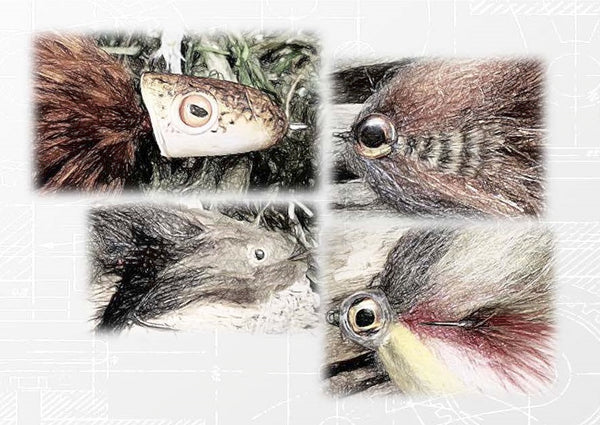Flymen Blog
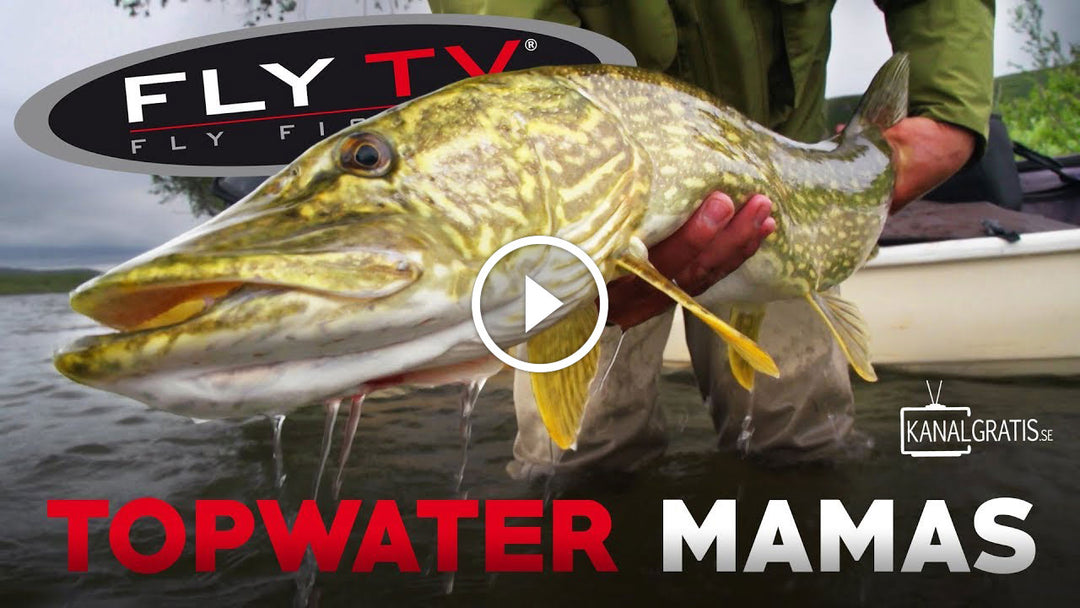
3 years ago, we visited a remote mountain location in Northern Sweden for the first time to target pike on the fly.
The plan was to make a really cool pike film with meter-long fish slamming mice and lemming patterns on the surface. Unfortunately, that didn’t happen because the water was already too warm by that time and most of the fish had moved out of the shallow coves.
So, fast forward and we decided to try again later on during the first week of the open season. During spring I had developed a pattern based on the new Surface Seducer Howitzer baitfish popper heads that was more of a subsurface pattern with 2 hooks, a Fish-Skull Articulated Shank, and a big Dragon Tail at the end. I wanted a pattern that would work well both when fished roly poly as well as with strong pulls.
The helicopter brought us out the Tjuonajokk fishing camp, located way above the Arctic Circle.

The plan this time was to drive with the river boats through the rapids upstream to a big cove were the pike had spawned a few weeks before and were still hanging around waiting for whitefish and grayling to come in and feed in these shallow areas.
We took turns poling the boat forward and with only one of us fishing at a time so our cameraman could catch every single take in slow motion. How did it turn out? See for yourself.
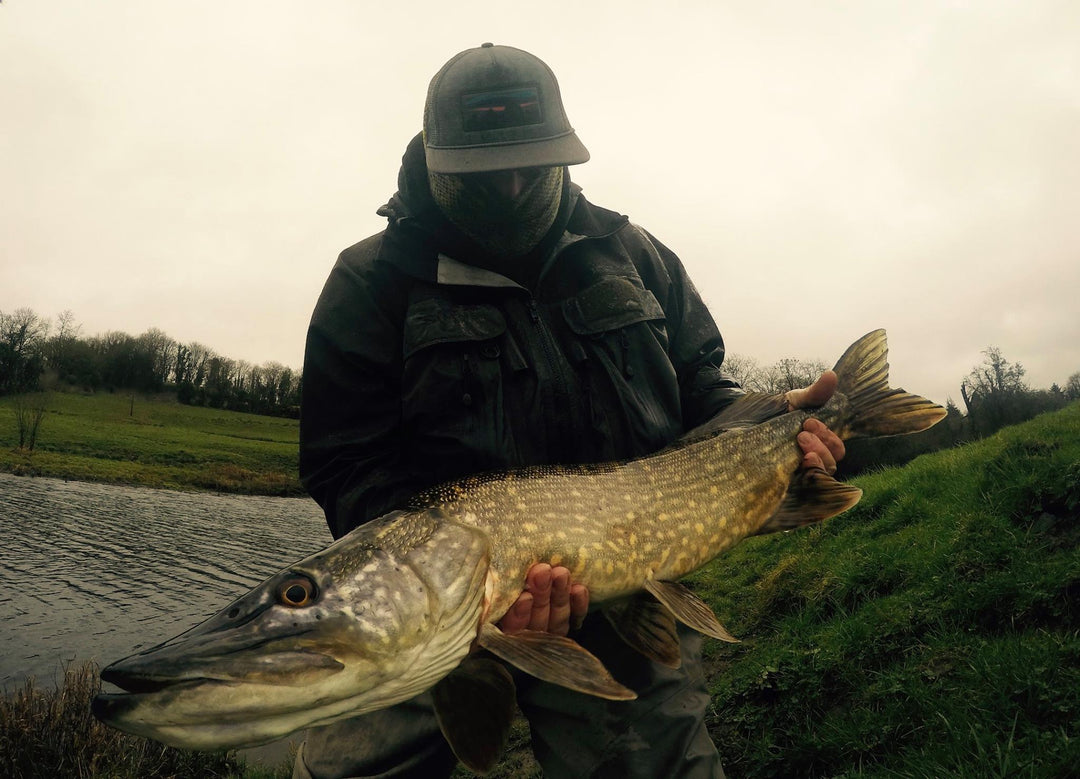
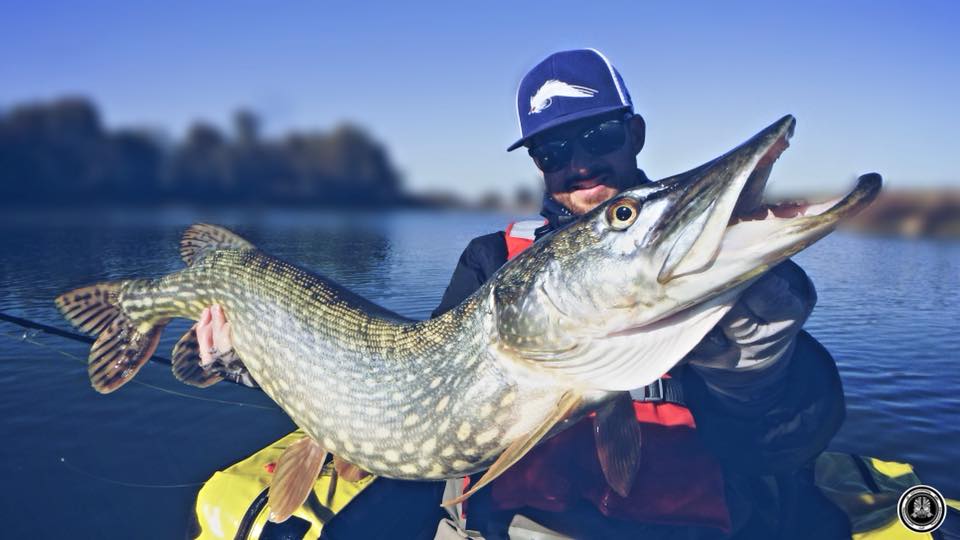
Autumn is one of the best seasons for pike fishing.
Catching them in rivers is very exciting as well as an extreme fishing experience. Not only do you have to fight against these river wolves, but also against the wild environment.
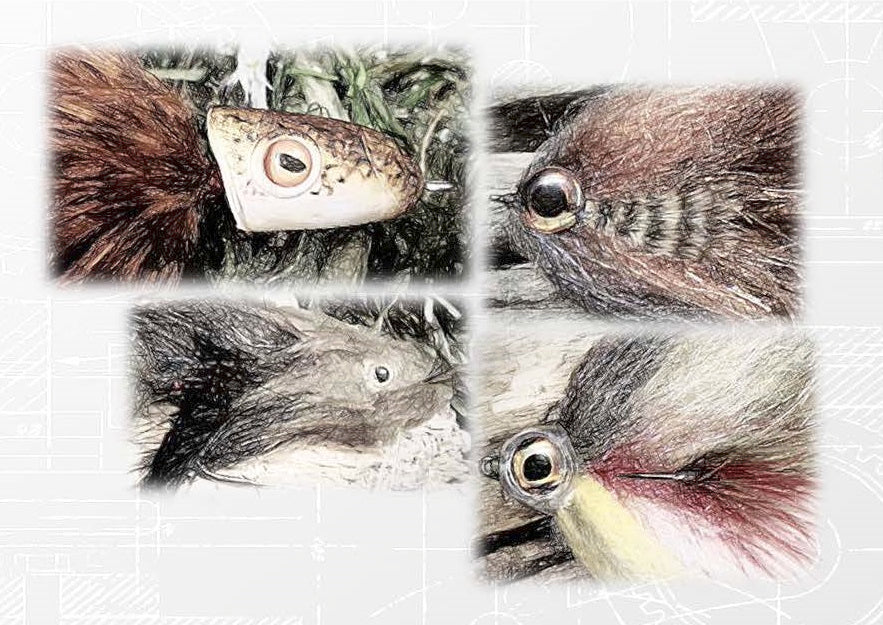
While I’m always excited to catch any fish regardless of size, the level of excitement goes up exponentially when casting for predatory fish like musky and pike.
There is something seemingly primal about these fish — maybe it’s all their teeth in that crooked grin. There are a couple of puzzles to figure out when designing and tying big flies for big fish.
To get bigger fish interested in your flies, they have to be of sizable equity to the fish. In other words, you throw a big fly to a big fish because they need a bigger meal to sustain their weight. Smaller patterns will more often than not get the results that a larger fly will, especially in waters known to house bigger fish.
Big flies can often be mistaken for a lot of materials stacked onto a hook. The more materials you tie on a hook, the heavier it will be. With some musky flies being a foot long, you don’t want your arm to fall off halfway through a fishing trip.
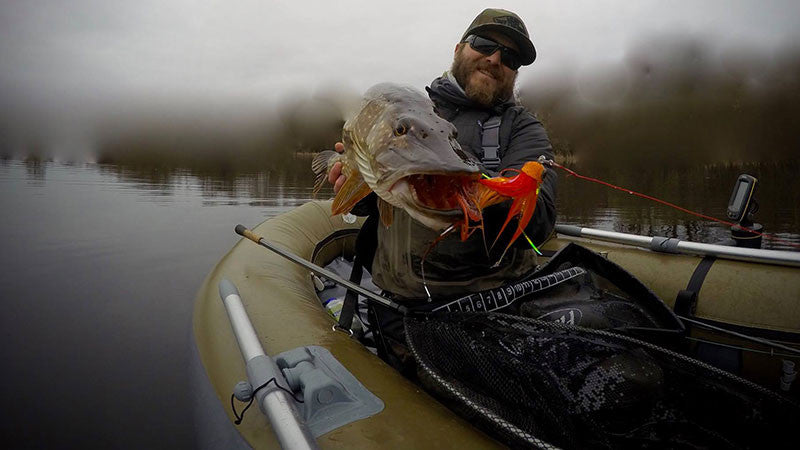
The Esox family has evolved over thousands of years to give us a top predator to chase on the fly.
These beasts' senses are tuned to the max.
One sense that is important for pikes/muskies is the lateral line, a system of tactile sense organs located in the head and along both sides of the body, used to detect movement and vibration in the surrounding water.
They use their lateral line in conjunction with their sight to give them a more accurate picture of what’s going on – how far away their prey is, how fast it's moving, and its size.
The lateral line is often forgotten by the fly angler. We tie pretty flies, but most of them have a very small footprint in the water. I'm not saying these don’t work, but why not maximize your chances of attracting more fish or perhaps bigger fish?
So how can you make a loud fly?







